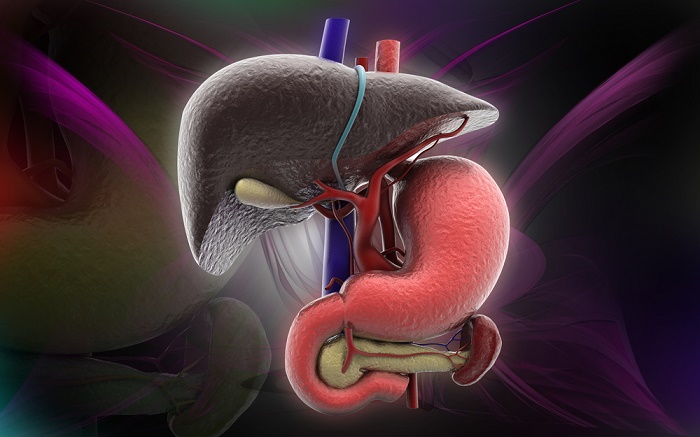What is fructose intolerance and what are the symptoms?

Anyone with a fructose intolerance will begin to realize that fructose is found in many foods. With the right diet, however, complaints and symptoms can be avoided and even complete improvement can be achieved.

Surprisingly, many people tolerate only small amounts of fructose, and also fructans and FODMAPs. Experts estimate that up to 30 percent of adults in Germany are affected by this type of food intolerance.
For comparison: Lactose intolerance, much more widely known, occurs in about 15 percent of Central Europeans, also because the information on fructose intolerance is less reliable.
Table of Contents
What about fructose intolerance?
In the intestine there are small transporter proteins, through which the nutrients from inside the intestine finally reach the blood. Besides glucose, fructose is also introduced into the body.
The amount of fructose that can be transported is naturally limited. “That means that every single person can tolerate a certain amount of fructose.”
If the transporter is not working properly, the patient can handle less fructose than a healthy person. Therefore, it is called fructose malabsorption, causing a limited intake of fructose.
The term “fructose intolerance” or ” fructose food intolerance (IAF)” is rather colloquial and means that a person does not tolerate sugar well and responds with symptoms. The food allergy is when the immune system sees food as “dangerous” and cause an allergic reaction. This is not the case for fructose.
The causes that are responsible for fructose intolerance are not yet known. Presumably, the function of the relevant intestinal transporter decreases over the course of life. Additionally, fructose has been found in more foods in recent years, for example in soft drinks, processed and modified products. As a result, people today consume more fructose with food than before.
What symptoms does fructose intolerance cause?
The most common symptoms are flatulence and diarrhea. This is triggered by fructose. If it reaches the large intestine, it is broken down by bacteria. This produces gas and some foul-smelling fatty acids, and digestion becomes out of sync. Furthermore, it can also lead to abdominal pain, bloating, regurgitation, and nausea. In each human being the symptoms are expressed differently.
How is fructose intolerance determined?
Often times, patients seek the opinion of different doctors and struggle for years with symptoms until the diagnosis is finally made. The problem with finding an accurate and rapid diagnosis is that the symptoms are very nonspecific.
That is, the most diverse causes can be behind it: there may be lactose intolerance, an irritable bowel, an inflammatory bowel disease, just to mention a few examples. Sometimes diet is simply to blame for all the symptoms. Onions, cabbages, legumes, and too much whole grain products may be inflaming your gut.
You should try to specify and observe if symptoms appear after eating a certain food. If the gastrointestinal specialist suspects that fructose is the trigger, a breath test is performed.
For this, the person drinks – on an empty stomach – a fructose solution and then blows at certain intervals into a device. Subsequently, the hydrogen content in respiration is measured. If this exceeds a specific value and the person has symptoms, then this speaks in favor of fructose intolerance.
How is it treated?
If the diagnosis is confirmed, the gastroenterologist sends the person concerned to a nutrition expert. So, you shouldn’t go your own way to eliminate certain foods and do tests. Some people try to eliminate fructose completely from the diet; however, this is not necessary and on the other hand important nutrients may be permanently absent.
A nutritionist will review the eating habits together with the patient and tell him how to eat first and for a long time. The therapy begins with a two-to-four-week phase in which it is largely fructose-free.
In a food diary, the patient documents what they have eaten and how they feel afterwards. Your discomfort should improve significantly during this time. Then the testing phase begins. Slowly, foods that contain fructose are incorporated again, initially those that contain little. Now it’s important to recognize which foods are best tolerated and which ones cause problems.
How to eat well with fructose intolerance?
Among the foods that contain a lot of fructose are mentioned apples, pears, mangoes, grapes, dried fruits, honey, pear syrup, apple cider vinegar, fruit and vegetable juices, dates, dried figs, dried apricots, persimmons, cherries, sour cherries, blueberries, strawberry, raspberry, pomegranate, among others.
The sugar that is commonly used is also made up of fructose. Likewise, fructose is abundant in all sweets. Be careful with “light” products, canned vegetables and diet sodas, check the ingredient list very well. They are often mixed with these fruity sweetener products.
Many types of fruit are considered well tolerated because they contain little fructose or glucose is present in a favorable proportion. These include bananas, apricots, and tree nuts. Glucose facilitates the uptake of fructose in the intestine.
Do not eat fruits purely, but with a meal (for dessert, for example) or together with dairy products, good fats and proteins. Fats and proteins cause fructose to be absorbed more slowly. This makes work easier for the diseased intestinal transporter.
Sugar substitutes like sorbitol, xylitol, and mannitol make it difficult for fructose to be absorbed from the gut, so they should be avoided if possible. These substitutes are found, for example, in chewing gums, sugar-free candies, and diabetic products.
If the patient has been able to determine with the help of a nutrition expert, which foods and how much fructose does not cause problems, he can live in many cases without discomfort.
Important: There are no general tips and prohibitions. The patient can eat what he personally tolerates. Also, the compatibility threshold should always be tested. Sometimes, the damaged transport system recovers in the intestine and you can even eat an apple or some honey without regrets or presenting symptoms, hence the importance of making the diagnosis and working on recovery and diet.


